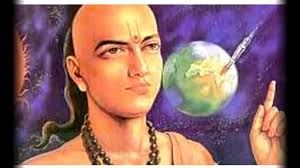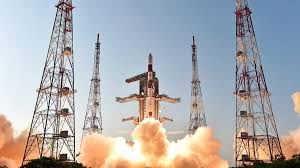Achievements of Indians in Science & Technology-2 | Science & Technology for UPSC CSE PDF Download
| Table of contents |

|
| Contributions made by Ancient Indians to the world of Science and Technology |

|
| Contributions made by Indians to Space Technology |

|
| Contribution to Socio-economic Development |

|
| Conclusion |

|
Contributions made by Ancient Indians to the world of Science and Technology

The Idea of Zero and Decimal System
Mathematician Aryabhata introduced the concept of zero and integrated it into the decimal system, revolutionizing mathematical operations like addition and subtraction.
The decimal system, with its ten symbols representing positional and absolute values, simplified arithmetic and accelerated practical inventions.
Numeral Notations and Fibonacci Numbers
Indian numeral notations, adopted by Arabs and later the Western world, facilitated mathematical computations.
The Fibonacci sequence, initially described in Indian mathematics as mātrāmeru, predates its introduction in Western European mathematics by centuries.
Binary Numbers and Ruler Measurements
Pingala's treatise Chandahśāstra introduced binary numbers, the foundation of computer programming languages.
Ancient rulers excavated from Harappan sites exhibited remarkable precision and alignment with traditional units used in South Indian architecture.
Atomic Theory and Heliocentric Theory
Kanad proposed an atomic theory centuries before John Dalton, positing the existence of anu (atoms) and their combinations into molecules.
Aryabhatta's Aryabhatiya advanced the heliocentric theory, accurately describing Earth's rotation and revolution around the Sun.
Wootz Steel and Smelting of Zinc
Wootz steel, produced by the Tamils of the Chera Dynasty, was renowned for its superior quality and craftsmanship.
India pioneered the distillation process for zinc smelting, with Zawar in Rajasthan being the world's oldest known zinc smelting site.
Plastic Surgery and Ayurveda
Sushruta Samhita, authored by Sushruta in the 6th century BC, detailed advanced surgical techniques including rhinoplasty (nose reconstruction).
Charakasamhita, by Charaka, laid the foundation of Ayurveda, presenting concepts of digestion, metabolism, and immunity long before Hippocrates.
Iron-Cased Rockets and Indian Heritage
Tipu Sultan of Mysore developed iron-cased rockets in the 1780s, which proved highly effective against British forces during the Anglo-Mysore Wars.
These contributions represent a fraction of India's rich scientific and technological heritage, spanning fields like gemstone therapy, farming, literature, and beyond, with a recorded history of over 5000 years.
Contributions made by Indians to Space Technology
The Indian Space Research Organization (ISRO) has indeed been hailed as one of the most successful space programs globally, achieving remarkable milestones and breakthroughs through indigenous innovation and determination. Here's an overview of some of ISRO's significant achievements in recent years:

Chandrayaan 2: India launched its second lunar mission, Chandrayaan-2, in 2019 to explore the Moon's South Pole. While the orbiter successfully continues to provide valuable data, the lander-rover faced a technical snag during landing. ISRO demonstrated resilience with Chandrayaan-3, launched in 2023, which achieved a historic soft landing on the Moon's South Pole, making India the first nation to land in this region.
INSAT: The Indian National Satellite System (INSAT) network has revolutionized communication, broadcasting, telecommunications, and meteorology across the South Asian region. It has significantly enhanced India's capabilities in satellite-based services.
Polar Satellite Launch Vehicle (PSLV): ISRO's development of the PSLV has enabled cost-effective and reliable access to space. It has facilitated international collaborations by launching satellites of other nations, demonstrating India's space launch capabilities.
Chandrayaan 1 and Mangalyaan: Chandrayaan-1, launched in 2008, marked India's first lunar probe mission. Mangalyaan, launched in 2013, made history by successfully entering Mars' orbit in its maiden attempt, showcasing India's capability to undertake interplanetary missions.
ASTROSAT: ISRO launched ASTROSAT in 2015, India's first dedicated space observatory. This milestone positioned ISRO as the fourth space agency globally to achieve such a feat, after NASA, Roscosmos, and ESA.
Scramjet and RLV-TD: ISRO's successful launch of the Supersonic Combusting Ramjet (Scramjet) and the Reusable Launch Vehicle-Technology Demonstrator (RLV-TD) demonstrated advancements in air-breathing propulsion systems and reusable launch technologies, respectively.
Record Satellite Launches: ISRO set a world record by launching 104 satellites in a single mission, showcasing its ability to execute complex and efficient satellite deployment operations.
Crew Escape Module and Gaganyaan: The successful test of the Crew Escape Module in 2018, followed by multiple abort tests and unmanned precursor missions in 2024, marked significant milestones in ISRO's preparations for the Gaganyaan mission, India's first manned space mission scheduled for 2025-2026.
International Collaboration: Missions like NAVIC (Indian Regional Navigation Satellite System) and the South Asia Satellite exemplify ISRO's collaboration with other nations, fostering regional cooperation in space exploration and technology development.
XPoSat and Reusable Launch Vehicle Advancements: In 2024, ISRO launched XPoSat, India's first dedicated polarimetry mission to study cosmic X-ray sources, enhancing its astrophysics research capabilities. Additionally, ISRO advanced its reusable launch vehicle program with successful landing tests of the Pushpak RLV in 2023-2024, paving the way for cost-effective space access.
Aditya-L1 and Gaganyaan: Aditya-L1, launched in 2023, is India's first solar observatory mission, successfully placed at the L1 point to study the Sun. The Gaganyaan mission, India's first manned space mission, is progressing with planned launches in 2025-2026, underscoring India's commitment to space exploration and research.
ISRO's achievements underscore India's growing prowess in space technology and its commitment to advancing scientific knowledge and exploration. With ambitious missions on the horizon, ISRO continues to push boundaries and inspire the world with its achievements in space exploration and technology.
Contribution to Socio-economic Development
The Indian space programme has evolved significantly over the past four and a half decades, showcasing impressive progress and self-reliance through integrated programs. Through the innovative use of space technology, India has fostered a knowledge-based society, leading to profound social, economic, and political transformation. Here's a detailed breakdown of the various applications and impacts of the Indian space programme:

Agricultural Sector:
FASAL: Acreage and production estimates for principal crops are provided using Forecasting Agriculture Output using Space Agrometeorology and land-based observations (FASAL), aiding in crop management and decision-making.
Precision Farming: IRNSS (Indian Regional Navigation Satellite System) enables precision farming techniques, optimizing agricultural practices for increased productivity and resource efficiency.
AGROMET Towers: These towers measure critical parameters like soil temperature, moisture, heat, radiation, wind speed, direction, pressure, and humidity, facilitating precision agriculture and crop management.
Environmental Conservation and Resource Management:
Wasteland Mapping and Watershed Development: Remote sensing technologies are employed for mapping wasteland areas and watershed development, contributing to environmental conservation and sustainable land use.
Fisheries Sector Augmentation: Satellite-derived information assists in identifying Potential Fishing Zones (PFZ) and provides data for inland fisheries and aquaculture, supporting the augmentation of income in the fisheries sector.
Mineral and Natural Resource Survey:
Remote sensing surveys enable the surveying and mapping of various mineral and natural resources, aiding in resource management, conservation, and policy formulation.
Disaster Management and Meteorological Services:
Space technology plays a crucial role in delivering cyclone warnings, conducting search and rescue operations, and providing meteorological services, including monsoon, flood, and cyclone forecasts.
Satellite data enhances disaster preparedness and response efforts, contributing to saving lives and minimizing damage.
Communication and Education:
Satellite communication technologies have been developed to enhance communication infrastructure in India, enabling telemedicine services, spread of education, and connectivity to remote areas.
Initiatives like Gramsat satellites provide essential services to rural villages, fostering socio-economic development and empowerment.
Satellite Aided Search and Rescue (SAS&R):
As part of India's commitment to the International COSPAS-SARSAT programme, satellite-aided search and rescue services provide alerts and position location services for distressed aircraft and ships, contributing to maritime safety.
Economic Growth and Commercialization:
ANTRIX, the commercial arm of ISRO, has commercialized space launching technologies, resulting in economic gains and technological advancement.
Space technology applications have contributed to economic growth through enhanced productivity, resource management, and innovation.
Social, Cultural, and Scientific Consolidation:
The Indian space programme has played a significant role in fostering social, cultural, and scientific consolidation and harmony, promoting national pride and unity.
Conclusion
The Indian space programme has made remarkable progress, driven by well-integrated and self-reliant programs. By promoting a knowledge-based society, India's space technology programme has catalyzed social, economic, and political transformation, positioning the nation as a global leader in space technology and applications.
|
90 videos|491 docs|209 tests
|
FAQs on Achievements of Indians in Science & Technology-2 - Science & Technology for UPSC CSE
| 1. What are some of the key contributions made by Ancient Indians to the world of Science and Technology? |  |
| 2. How have Indians contributed to Space Technology? |  |
| 3. What role have Indians played in Socio-economic Development? |  |
| 4. What are some notable achievements of Indians in Science & Technology? |  |
| 5. How have Indians contributed to the field of medicine and healthcare? |  |















